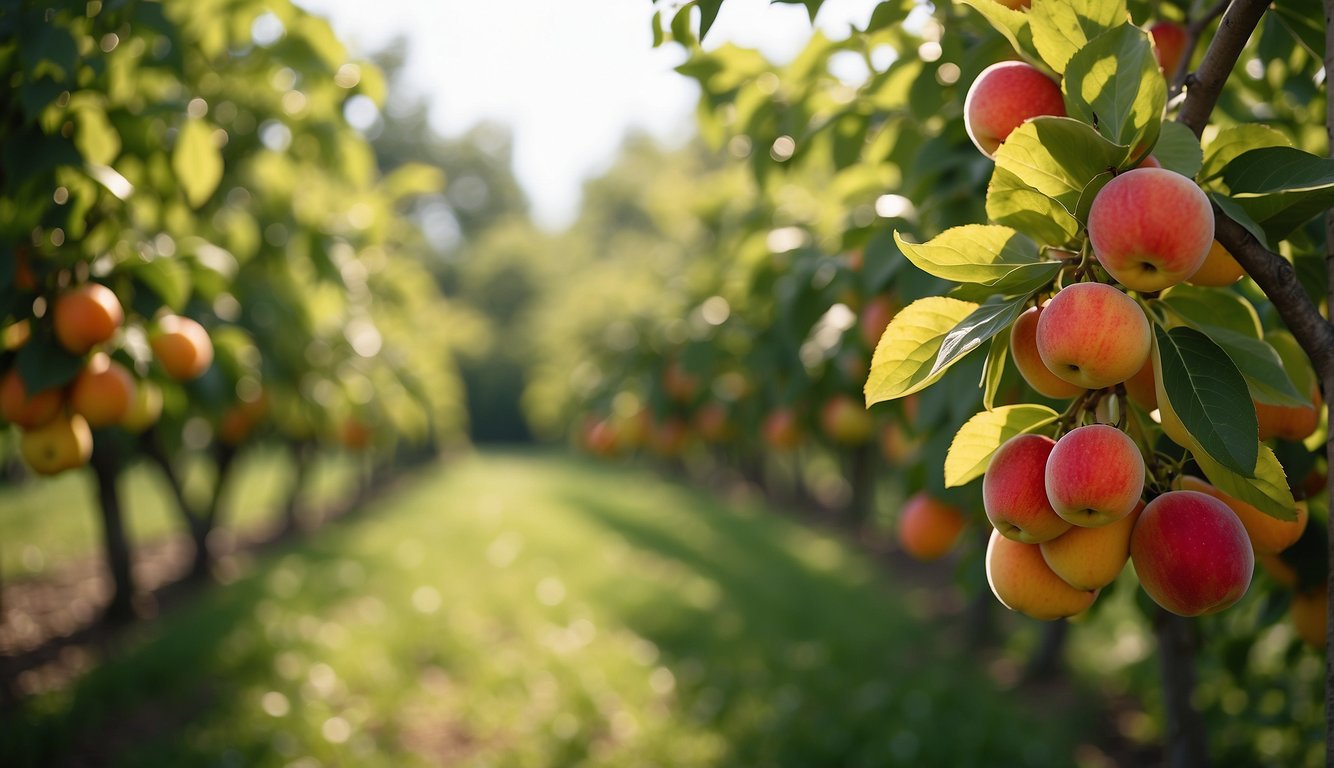TheHerbProf.com is a treasure trove of knowledge for those interested in natural healing and herbal remedies. The website is run by Paul Johnston MD. A naturopathic who has not only received extensive education in the field but also has personal experience in self-healing.
When it comes to fruit trees, there is more to them than just the delicious fruit they produce. Many fruit trees are also known for their stunning blooms and can add a beautiful touch to any garden or landscape.
In this article, I will share some of the most beautiful fruit trees that are sure to impress with their vibrant colors and fragrant blossoms.
One of the most beautiful fruit trees is the cherry tree. With its delicate pink or white blossoms, the cherry tree is a sight to behold in the springtime.
Not only are these trees visually stunning, but they also produce delicious fruit that can be used in a variety of recipes.
Whether you’re growing them for their fruit or just for their beauty, cherry trees are sure to be a standout in any garden.
Another fruit tree that is known for its beauty is the peach tree. With its soft pink blossoms, the peach tree is a lovely addition to any landscape.
These trees also produce juicy, sweet fruit that is perfect for eating fresh or using in baked goods.
Whether you’re looking for a beautiful ornamental tree or a fruit tree that is as delicious as it is stunning, the peach tree is an excellent choice.
The Allure of Fruit Trees in Home Gardens
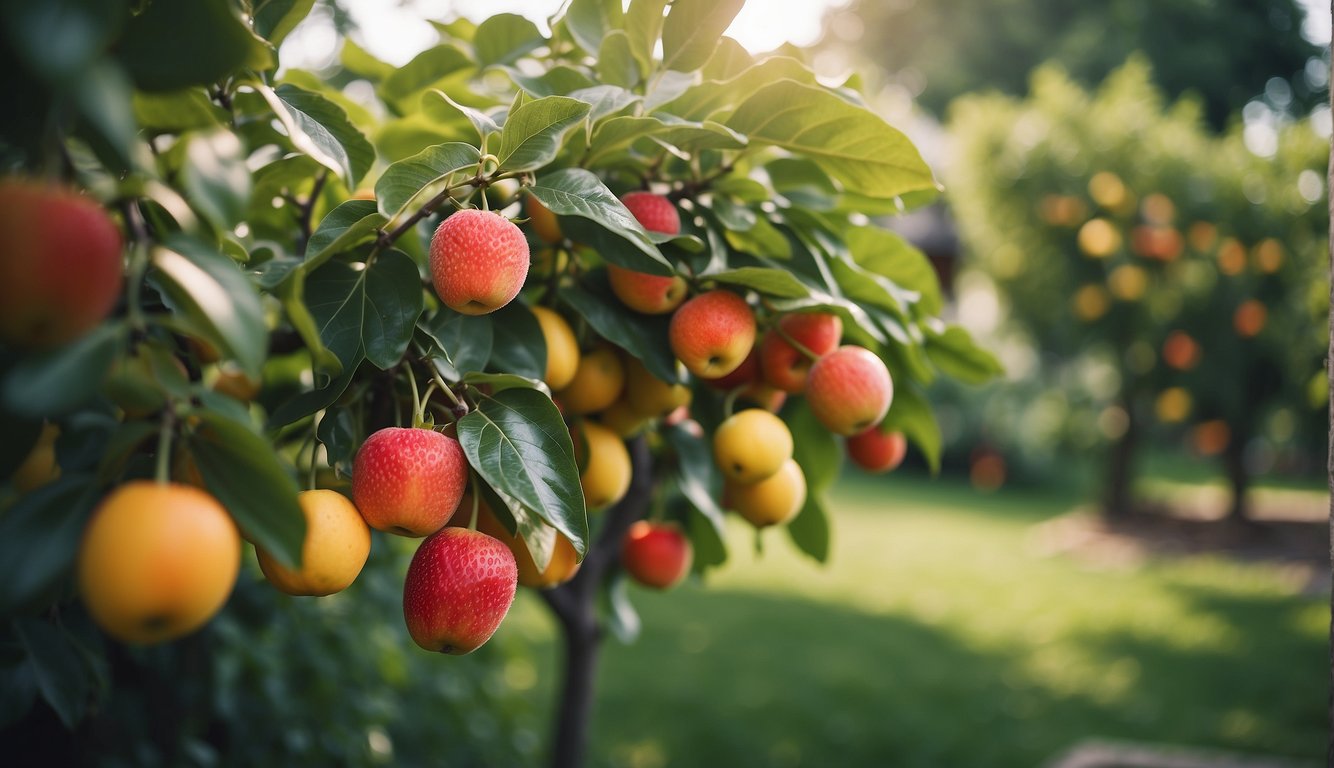
As an avid gardener, I have always been drawn to the beauty and practicality of fruit trees.
Not only do they provide a bountiful harvest of delicious, homegrown fruit, but they also add a touch of elegance and charm to any garden or orchard.
In this section, I will share some of the aesthetic and practical benefits of growing fruit trees in your home garden, as well as some tips for selecting the right tree for your specific needs.
Aesthetic and Practical Benefits
Fruit trees are not only beautiful to look at, but they also offer a range of practical benefits.
For one, they provide shade and shelter for other plants and wildlife, and they can help to improve soil quality by adding nutrients and organic matter.
Additionally, fruit trees can be used as a natural privacy screen or windbreak, and they can even help to reduce air pollution by absorbing carbon dioxide and other harmful pollutants.
From a purely aesthetic standpoint, fruit trees are simply stunning.
Whether you prefer the delicate blossoms of a flowering fruit tree or the lush foliage of a mature apple or pear tree, there is no denying the visual appeal of these plants.
Fruit trees can be used to create a focal point in your garden or to add color and texture to a small space.
And of course, there is nothing quite like the sight of a tree laden with ripe, juicy fruit just waiting to be picked and enjoyed.
Selecting the Right Tree for Your Garden
When it comes to selecting the right fruit tree for your garden, there are a few key factors to consider.
First and foremost, you will need to choose a tree that is well-suited to your climate and soil type.
Most fruit trees require full sun and well-draining soil, although some varieties may tolerate partial shade or heavier soils.
It is also important to consider the mature size of the tree, as well as its growth habit and fruiting characteristics.
Some popular fruit trees for home gardens include apple, pear, peach, plum, and cherry trees, although there are many other varieties to choose from depending on your specific needs and preferences.
If you have a small garden, you may want to consider a dwarf or semi-dwarf tree, which will take up less space but still provide a bountiful harvest of fruit.
And if you are looking for a tree that is both beautiful and practical, a flowering fruit tree such as a lemon or cherry tree may be just what you need.
Popular Types of Beautiful Fruit Trees
As an avid gardener, I have grown a variety of fruit trees over the years. In this section, I will cover some of the most popular types of beautiful fruit trees that I have personally grown and enjoyed.
Stone Fruit Trees
Stone fruit trees are known for their sweet, juicy, and delicious fruit.
Some of the most popular stone fruit trees include plum, cherry, peach, and nectarine trees.
Plum trees are particularly beautiful, with tiny white flowers that bloom in the spring.
Cherry trees are also stunning, with vibrant red blooms that last for several weeks.
Pome Fruit Trees
Pome fruit trees are another popular type of fruit tree. These trees produce fruit with a core, such as apples, pears, and quince.
Apple trees are perhaps the most well-known pome fruit tree, and they come in a wide variety of shapes, sizes, and colors.
Pear trees are also beautiful, with delicate white flowers that bloom in the spring.
Citrus and Exotic Fruit Trees
Citrus and exotic fruit trees are becoming increasingly popular among gardeners.
These trees produce fruit that is not commonly found in grocery stores, such as oranges, lemons, limes, mandarins, figs, pomegranates, and persimmons.
Citrus trees are particularly beautiful, with glossy green leaves and fragrant white flowers that bloom in the spring.
Cultivation and Care
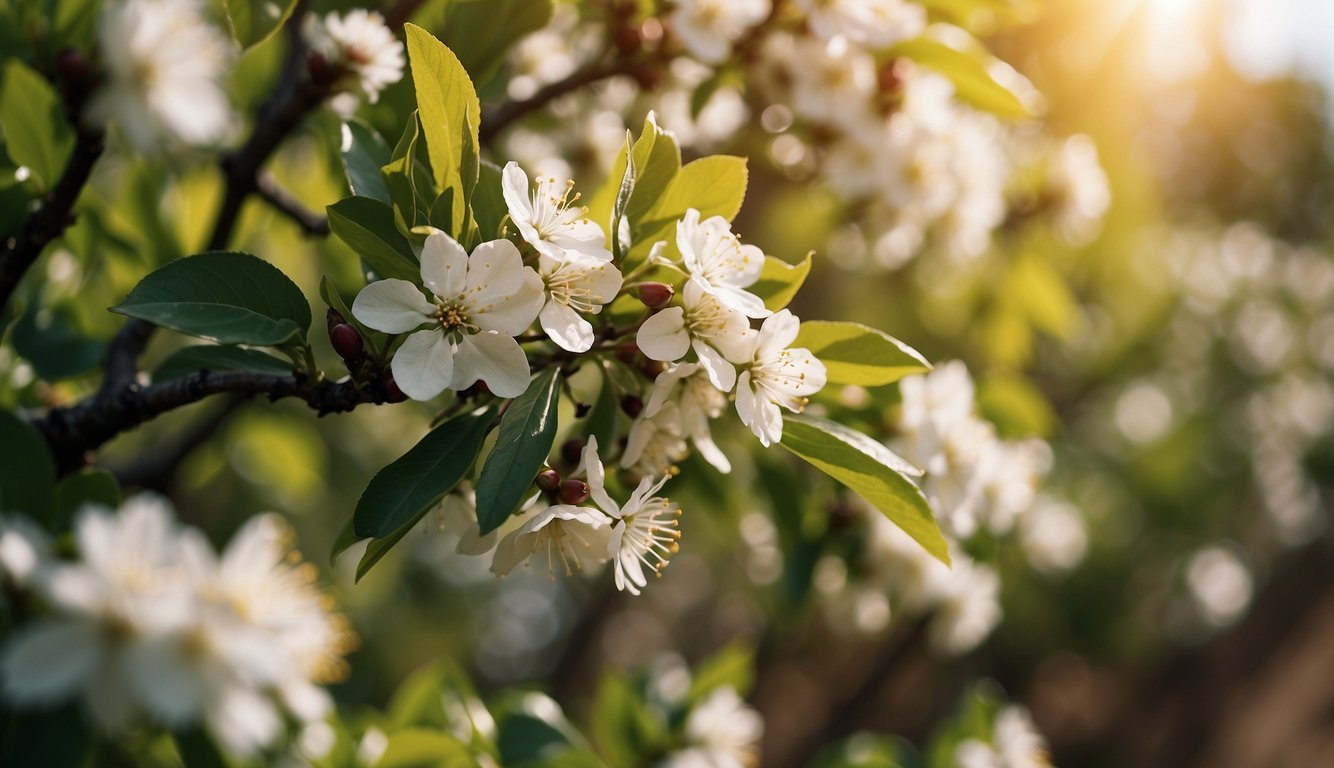
Growing fruit trees is a great way to beautify your garden and provide fresh produce for your family. However, it is important to understand the climate and hardiness zones when choosing which fruit trees to plant.
Understanding Climate and Hardiness Zones
Different fruit trees thrive in different growing conditions. Some fruit trees prefer warm climates, while others prefer cooler temperatures.
It is important to choose fruit trees that are suitable for your climate and hardiness zone.
For example, lemon trees grow best in warm climates and are sensitive to frost. They thrive in USDA hardiness zones 9-11.
On the other hand, apple trees can tolerate colder temperatures and grow well in USDA hardiness zones 5-8.
Planting and Growing Tips
When planting fruit trees, it is important to choose a location that receives full sun and has well-drained soil.
Fruit trees require adequate water, especially during the growing season.
It is important to water fruit trees deeply and regularly, but avoid over-watering as this can lead to root rot.
Fruit trees also require proper pruning to promote healthy growth and fruit production.
It is important to prune fruit trees during the dormant season to remove dead or diseased branches and promote new growth.
Maintenance and Disease Management
Fruit trees require regular maintenance to ensure healthy growth and disease resistance.
It is important to monitor fruit trees for signs of disease and pests, and take appropriate action to prevent or manage them.
Disease-resistant fruit tree varieties are available and can be a good option for reducing the risk of disease.
In addition to disease management, fruit trees require proper fertilization to promote healthy growth and fruit production.
It is important to choose a fertilizer that is appropriate for your fruit tree variety and apply it according to the manufacturer’s instructions.
Pollination and Fruit Production
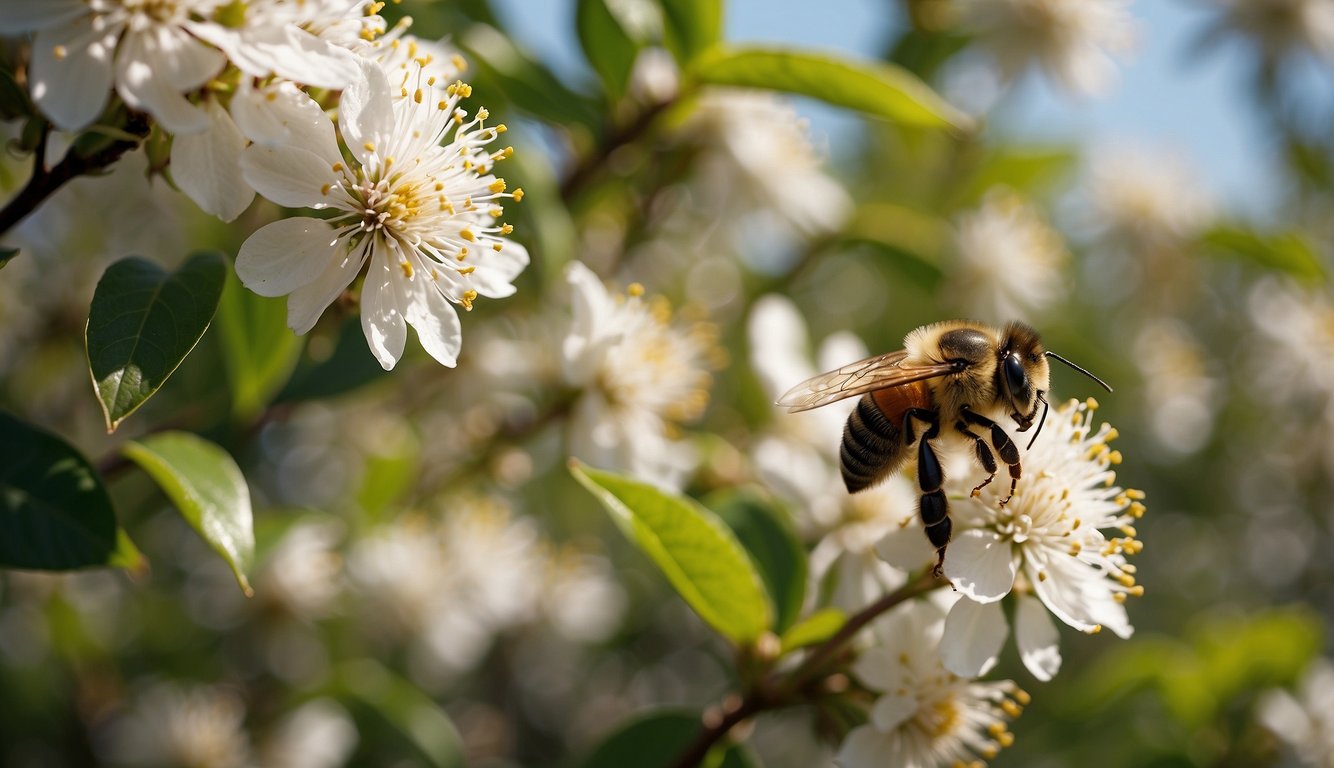
As a fruit tree enthusiast, I know that pollination is a crucial step in the production of fresh and delicious fruits.
Pollination is the process of transferring pollen from the male reproductive organ of a flower to the female reproductive organ of another flower. This process is essential for the growth and development of fruits, as it enables the fertilization of the ovules, which eventually become seeds.
The Role of Pollinators in Fruit Trees
Pollinators, such as bees, play a significant role in the pollination process of fruit trees.
Bees are attracted to the flowers of fruit trees because of their sweet nectar and pollen.
As bees move from flower to flower, they transfer pollen from the male to the female reproductive organs, allowing for cross-pollination to occur.
Cross-pollination is the process of transferring pollen from one flower to another flower of a different tree, which can result in a higher yield of fruit.
Self-Fertile and Self-Pollinating Varieties
Some fruit trees are self-fertile and self-pollinating, meaning they can produce fruit without the need for a pollinator.
Self-fertile fruit trees have both male and female reproductive organs in the same flower, allowing for self-fertilization to occur.
Self-pollinating fruit trees have flowers that contain both male and female reproductive organs, which enables the transfer of pollen within the same flower.
It is essential to note that even self-fertile and self-pollinating fruit trees can benefit from cross-pollination.
Cross-pollination can result in a higher yield of fruit and can also improve the quality and taste of the fruit.
Unique and Uncommon Fruit Trees
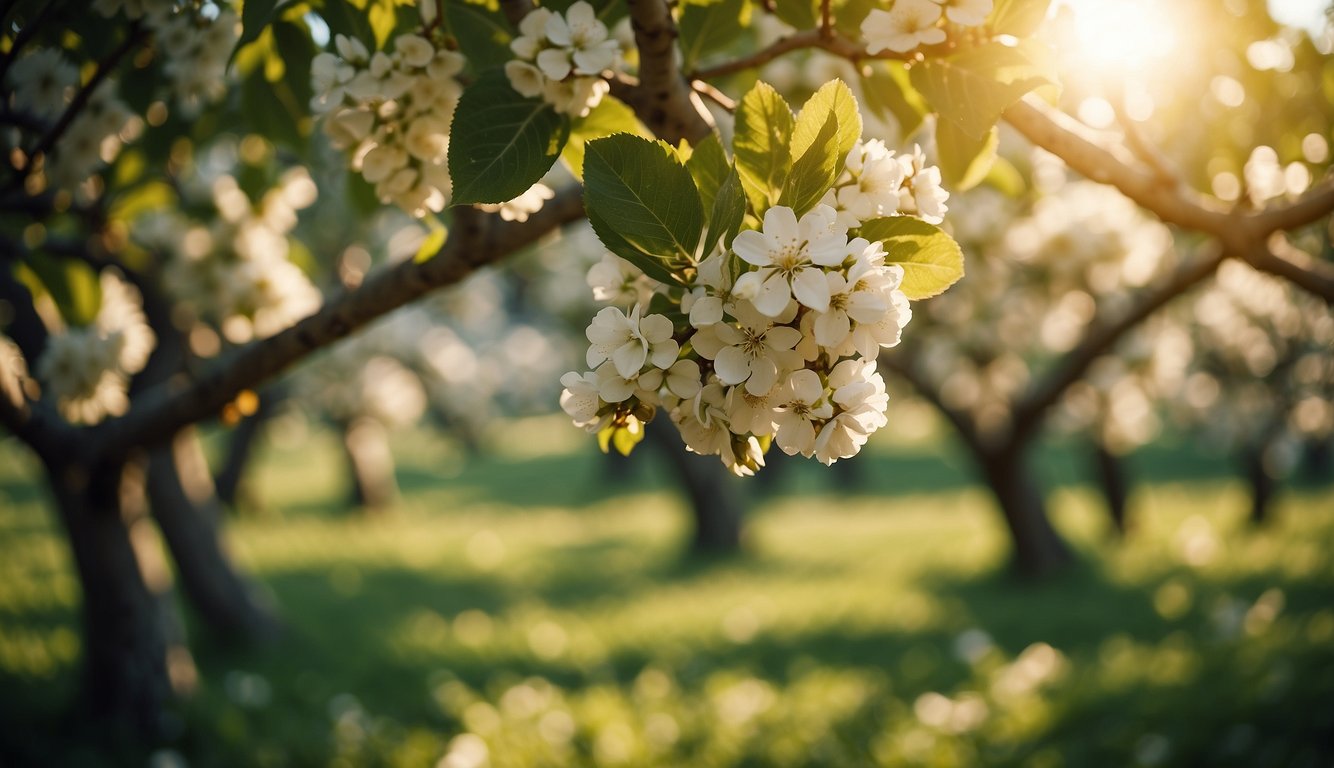
As a fruit tree enthusiast, I have come across several unique and uncommon fruit trees that are not commonly found in grocery stores.
These trees not only bear delicious fruits but also add aesthetic value to any garden or orchard.
In this section, I will discuss two categories of unique fruit trees: Asian and European varieties and specialty and ornamental trees.
Asian and European Varieties
Fig trees are a popular fruit tree that is native to the Middle East and Western Asia. They are easy to grow and produce sweet, juicy fruits that can be eaten fresh or dried.
Mulberry trees are another unique fruit tree that is popular in Asia and Europe. These trees produce sweet, juicy berries that can be eaten fresh or used to make jams, jellies, and pies.
Sour cherry trees are another variety of fruit tree that is popular in Europe and Asia.
These trees produce tart, juicy cherries that are perfect for making jams, jellies, and pies.
Methley and Damson plum trees are also popular in Asia and Europe. These trees produce sweet, juicy fruits that are perfect for eating fresh or making jams and jellies.
Specialty and Ornamental Trees
Meyer lemon trees are a popular specialty fruit tree that produces sweet, juicy lemons that are perfect for cooking and baking. These trees are also popular for their fragrant blooms and ornamental value.
Japanese cherry blossom trees are another popular ornamental fruit tree. These trees produce beautiful pink and white flowers that are perfect for adding aesthetic value to any garden or orchard.
Malus or crab apple trees are also popular ornamental fruit trees. These trees produce beautiful pink and white flowers in the spring and small, tart apples in the fall. These apples are perfect for making jams, jellies, and pies.
Growing Fruit Trees in Containers
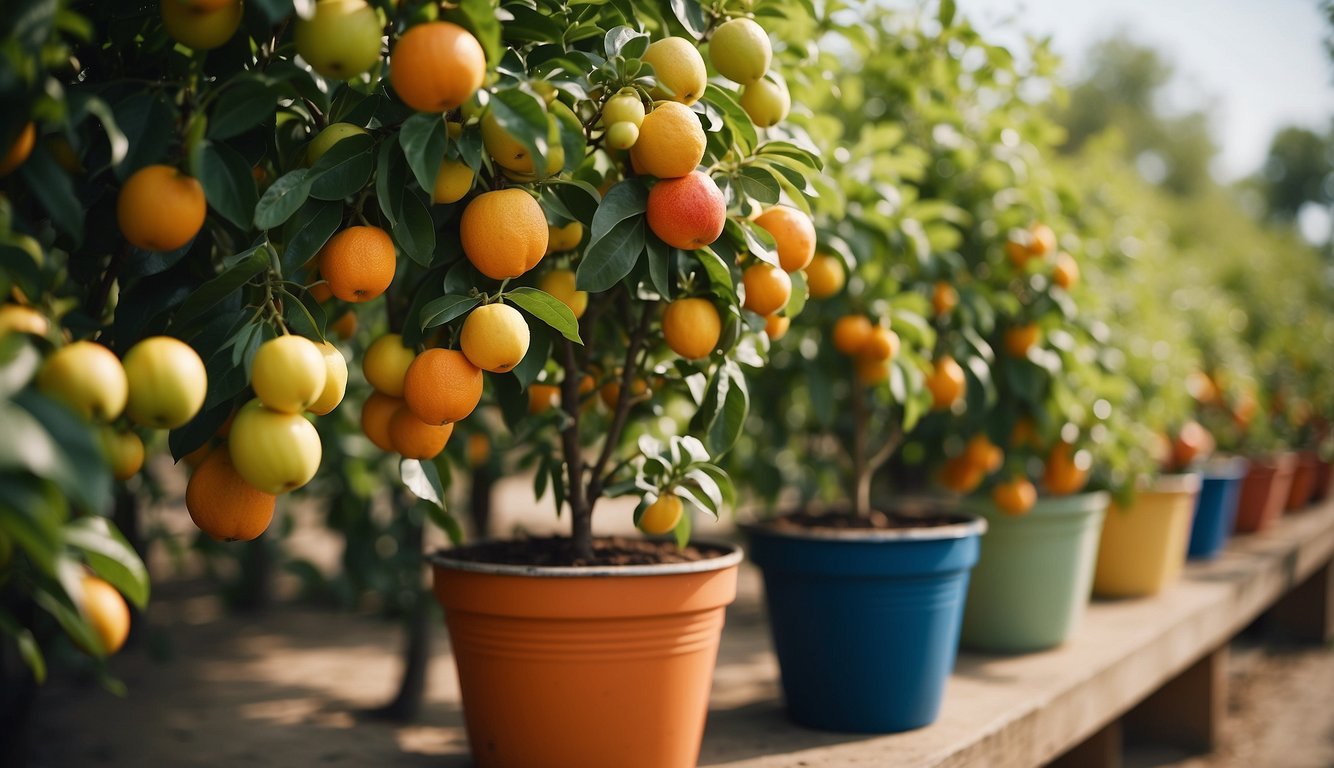
As a fruit tree enthusiast with a small garden, I have found that growing fruit trees in containers is a great way to enjoy fresh fruit without the need for a large garden. In this section, I will share some tips and information on how to grow fruit trees in containers.
Container Selection and Care
When selecting a container for your fruit tree, it is important to choose a pot that is large enough to accommodate the root system of the tree. A 10 to 16-inch diameter pot is generally recommended for most fruit trees [1].
It is also important to choose a pot with good drainage holes to prevent waterlogging, which can cause root rot.
In terms of container material, avoid cheap plastic pots as they can become faded and dull within a year or two. Instead, choose a quality pot that is made of durable material like glazed ceramic or terracotta.
These materials are not only aesthetically pleasing but also provide insulation for the roots, which can help to regulate soil temperature.
Proper care of the container is also important for the health of the tree. Make sure to clean the pot thoroughly before planting to prevent the spread of disease.
It is also important to periodically check the pot for cracks or damage, which can cause water leakage and damage to the roots.
Best Varieties for Container Cultivation
Not all fruit trees are suitable for container cultivation. When selecting a fruit tree for container cultivation, make sure to choose a variety that is suitable for small spaces and has a dwarf rootstock.
Some of the best fruit trees for container cultivation include:
- Trovita Orange Tree: This citrus tree is a great choice for container cultivation as it is small and low-maintenance [2]. It produces sweet and juicy oranges that are perfect for eating or juicing.
- Meyer Lemon Tree: This dwarf citrus tree is perfect for container cultivation as it only grows to about 6 feet tall [3]. It produces juicy and fragrant lemons that are perfect for cooking and baking.
- Foliage Fruit Trees: Some fruit trees have beautiful foliage that can add interest to your garden. For example, the “Bonfire” Peach tree has stunning red foliage that adds a pop of color to any garden [4].
Harvesting and Enjoying Your Fruit
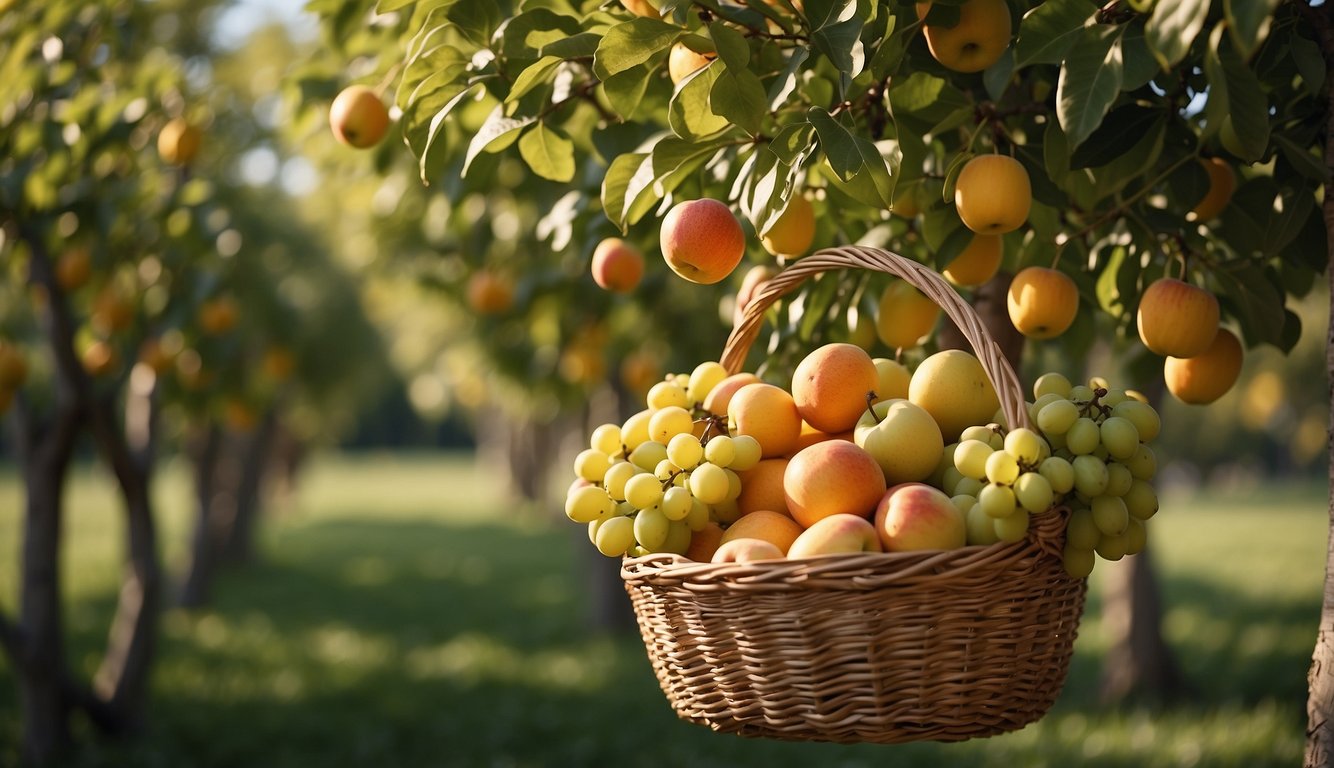
As a fruit tree owner, there’s nothing quite like the satisfaction of harvesting your own fresh, sweet, and juicy fruit. Here are some tips on how to pick and store your homegrown fruit, as well as some recipe ideas for enjoying them.
Picking and Storing Tips
When it comes to picking fruit, timing is everything. Plums, peaches, and cherries should be picked when they are fully ripe, but not overripe. You can tell if a peach is ripe by gently pressing the skin – it should give slightly. Sweet cherries are ready to be picked when they are plump and have a deep, rich color.
When harvesting figs, you want to pick them when they are fully ripe and have a slightly soft texture. They should come off the tree easily when gently tugged.
When it comes to storing your freshly picked fruit, make sure to handle them carefully. Avoid stacking them on top of each other, as this can cause bruising. Instead, store them in a single layer in a cool, dry place.
If you need to store them for longer than a few days, consider refrigerating them.
Recipes and Uses for Homegrown Fruit
There are so many ways to enjoy your homegrown fruit, from eating them fresh to incorporating them into a variety of recipes. Here are a few ideas:
- Dessert Apples: These are perfect for baking into pies, crisps, and cobblers. You can also slice them up and serve them with a dollop of whipped cream for a simple yet delicious dessert.
- Fresh Plums: These are great for eating fresh, but they also make a tasty jam or jelly. Simply cook them down with some sugar and lemon juice, and then can or freeze the mixture for later use.
- Sweet Cherries: These are perfect for snacking on, but they also make a great addition to salads. Simply pit and chop them up, and then toss them with some mixed greens, goat cheese, and a balsamic vinaigrette.
- Juicy Peaches: These are perfect for making homemade ice cream or sorbet. Simply puree them with some cream or coconut milk, and then freeze the mixture in an ice cream maker.
- Fresh Figs: These are perfect for topping pizzas or adding to charcuterie boards. Simply slice them up and arrange them on top of your favorite pizza, or serve them alongside some cured meats and cheeses.
Resources and Further Learning
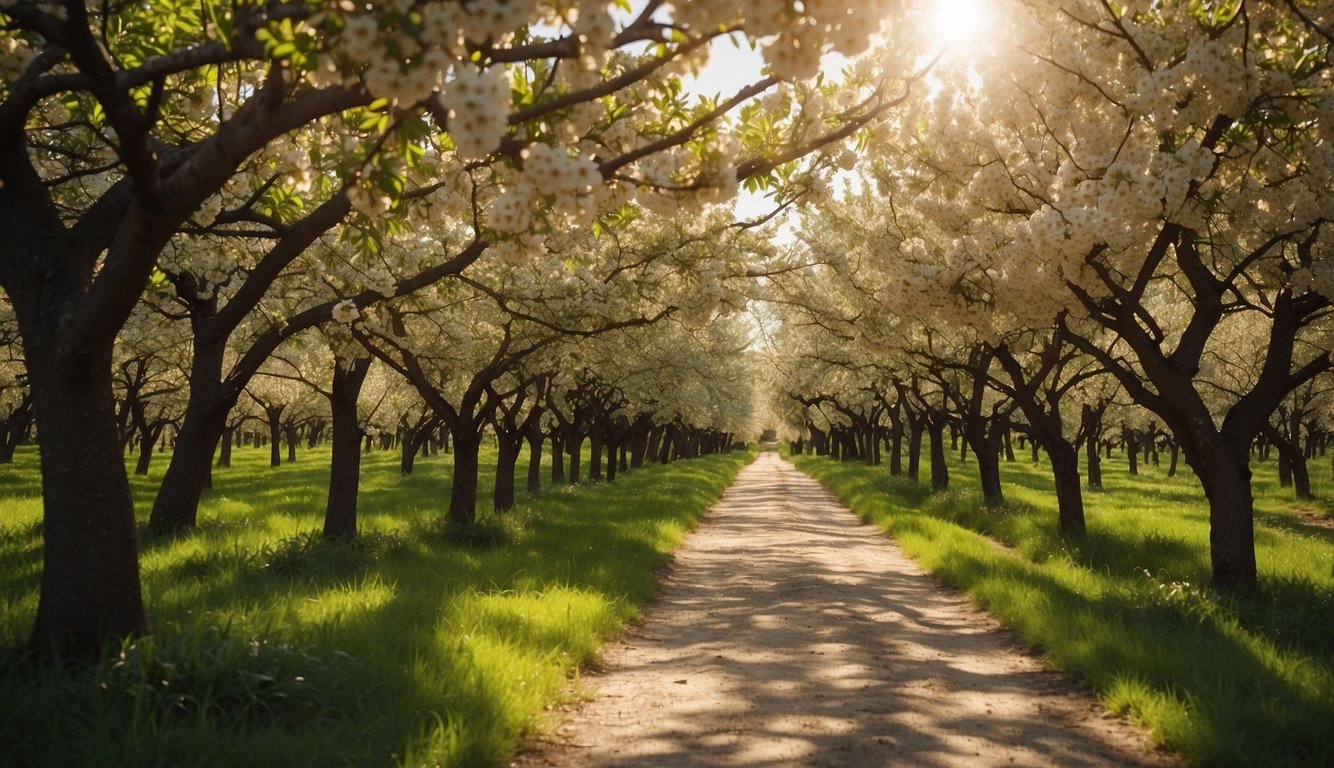
As you’ve learned about the most beautiful fruit trees, you might be interested in exploring more about them. Here are some resources that can help you expand your knowledge:
Educational Videos and Guides
Watching videos and reading guides can be a great way to learn more about fruit trees and how to care for them.
One of the best places to find educational videos on fruit trees is YouTube. You can find videos on topics ranging from planting and pruning to harvesting and preserving fruit.
Another great resource is the Arbor Day Foundation. They offer a variety of guides and resources on fruit trees, including how to choose the right tree for your climate, how to plant and care for your tree, and how to harvest and preserve your fruit.
Their website also has a wealth of information on other types of trees, as well as tips on landscaping and gardening.
Organizations and Foundations
There are also a number of organizations and foundations dedicated to promoting the planting and care of fruit trees.
One such organization is the Fruit Tree Planting Foundation, which works to plant fruit trees in communities around the world. They also offer resources and training on how to care for fruit trees, and they partner with schools, community groups, and other organizations to promote fruit tree planting and care.
Another organization worth checking out is the Edible Schoolyard Project, which works to create gardens and kitchens in schools around the country. They offer resources and training on how to plant and care for fruit trees, as well as how to incorporate fresh fruits and vegetables into school meals.
Their website also has a wealth of information on other topics related to gardening and sustainability.
Connecting Most Beautiful Fruit Trees with TheHerbProf
Let’s dive into the synergy between our Most Beautiful Fruit Trees and the herbal haven that is theherbprof.com.
Our Most Beautiful Fruit Trees are not just a feast for the eyes. They’re also a source of delicious, home-grown fruit. But how do you ensure they thrive? Enter theherbprof.com. It’s your go-to guide for all things herbal, including fruit tree care!
Imagine this. You’ve planted one of our Most Beautiful Fruit Trees. It’s growing, but you’re unsure about its care. Fret not! Theherbprof.com has got you covered. It offers a plethora of information on how to nurture your tree to its full potential.
But wait, there’s more! Theherbprof.com also shares the medicinal benefits of various fruits. So, while you’re enjoying the beauty and bounty of your tree, you’re also learning about their health benefits.
So, let’s get planting with our Most Beautiful Fruit Trees and let theherbprof.com guide us on this fruitful journey.
References – Most Beautiful Fruit Trees
Little Herb Encyclopedia, by Jack Ritchason; N.D., Woodland Publishing Incorporated, 1995
The Ultimate Healing System, Course Manual, Copyright 1985, Don Lepore
Planetary Herbology, Michael Tierra, C.A., N.D., Lotus Press, 1988
Handbook of Medicinal Herbs, by James A. Duke, Pub. CRP Second Edition 2007
The Complete Medicinal Herbal, by Penelope Ody, Published by Dorling Kindersley
Check the Following Articles!
How to Transplant Cactus Pups? A Step-by-Step Guide
Best Vegetables to Grow in Partial Shade?
Top Pruning Shears for a Clean and Precise Cut
Seed Starter Recipe: How to Make Your Own at Home
Frequently Asked Questions – Most Beautiful Fruit Trees
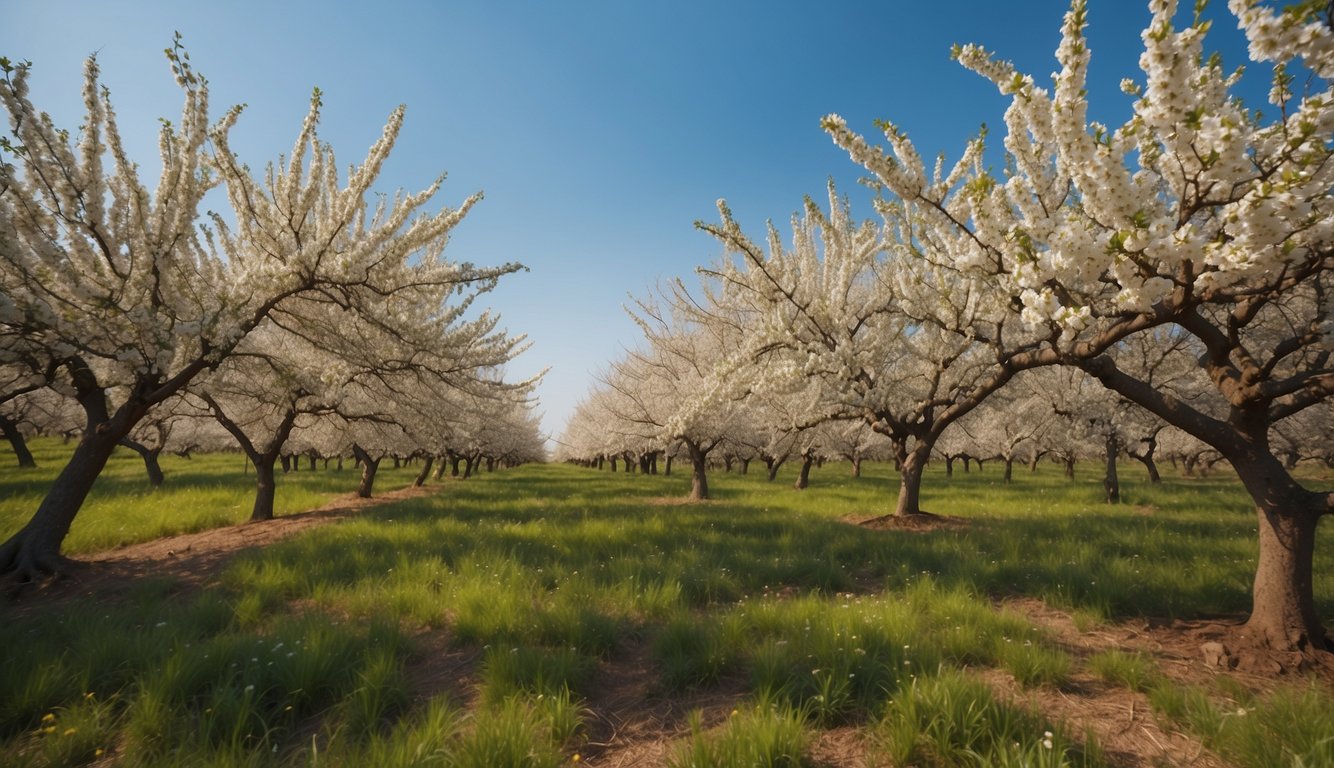
What are the top fruit trees recommended for adding beauty to landscaping?
Fruit trees that are known for their beautiful flowers include cherry, apple, peach, and plum trees. These trees not only add beauty to your landscape but also provide tasty fruits.
Which fruit trees are well-suited for planting in the front yard?
Fruit trees that are small in size and have a neat, compact shape are ideal for planting in the front yard. Some of the best options include dwarf citrus trees, dwarf apple trees, and dwarf cherry trees.
Can you list fruit trees that have both attractive flowers and delicious fruits?
Yes, there are many fruit trees that have both attractive flowers and delicious fruits. Some of the most popular ones include pear, apricot, nectarine, and fig trees.
How do you identify different fruit tree blossoms?
Different fruit tree blossoms have different characteristics. For example, apple blossoms have five petals and are pink or white in color, while cherry blossoms have five petals and can be pink or white. Plum blossoms, on the other hand, have five petals and are usually white.
What are some compact fruit trees ideal for limited space gardens?
Compact fruit trees that are ideal for limited space gardens include dwarf citrus trees, dwarf apple trees, and dwarf cherry trees. These trees take up minimal space and can be grown in containers.
Which fruit trees are known for being low-maintenance and easy to care for?
Fruit trees that are known for being low-maintenance and easy to care for include fig trees, pomegranate trees, and persimmon trees. These trees require minimal pruning and are generally disease-resistant.
